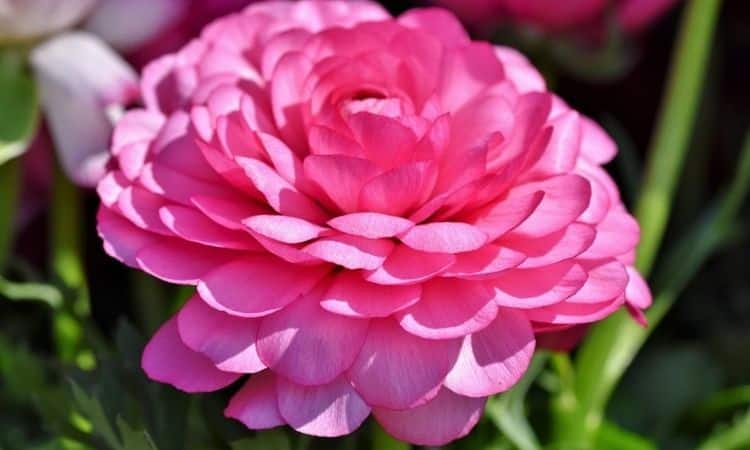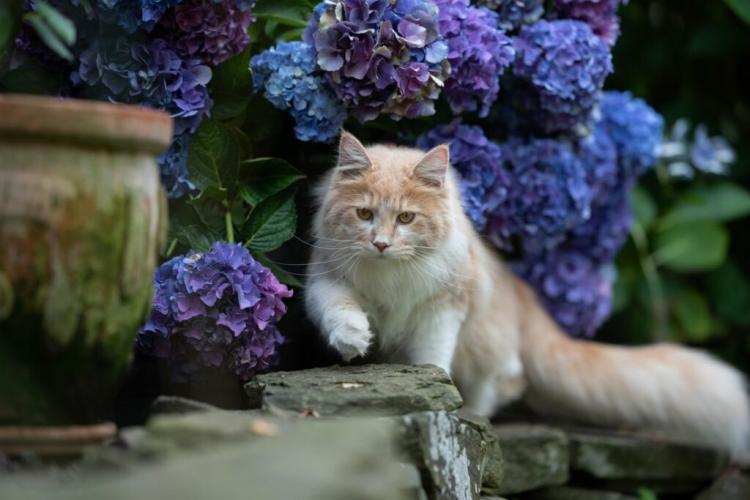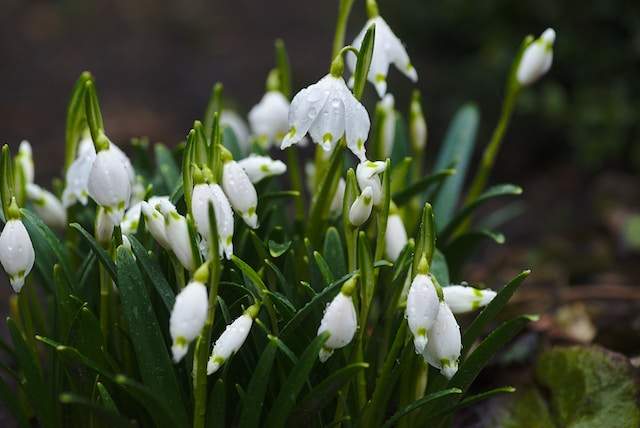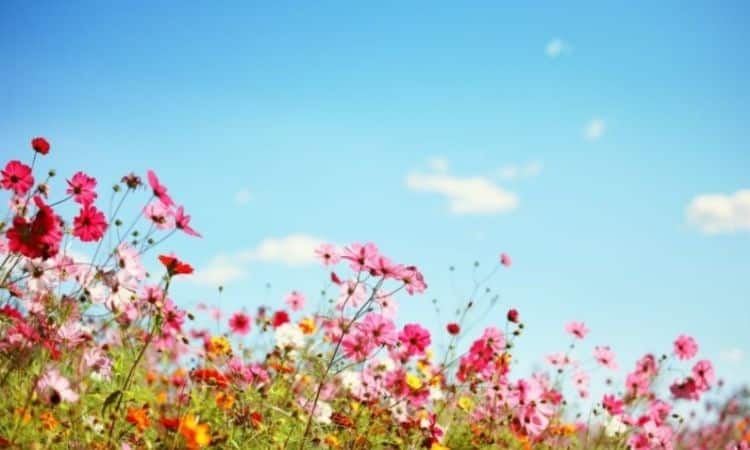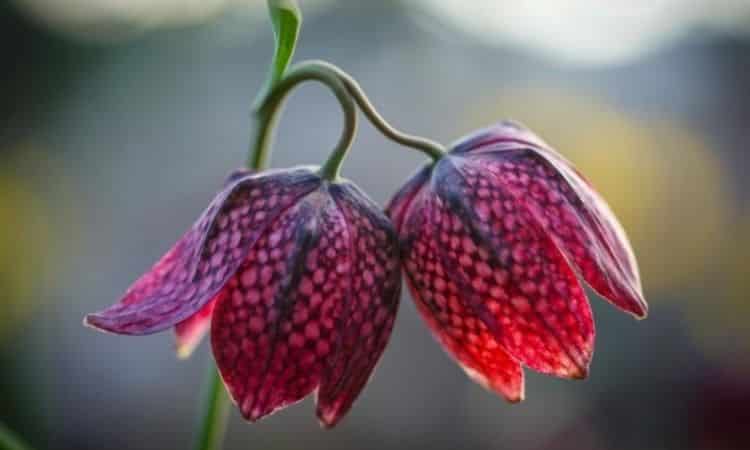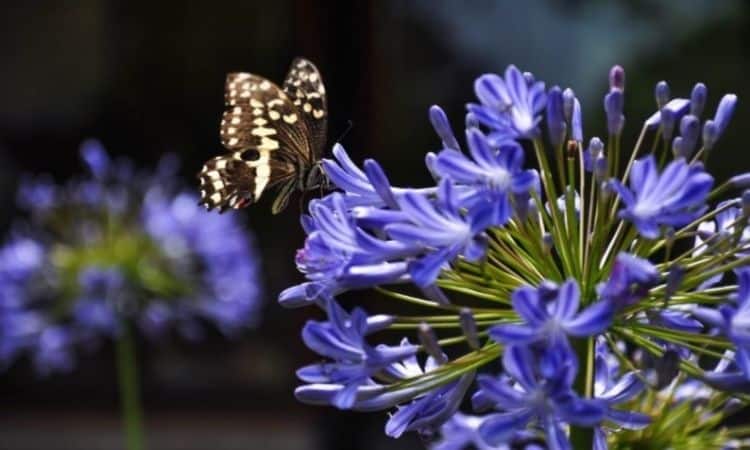Ranunculus Flower (The Persian Buttercup): Plants, Care And Hardy Varieties
When is the flowering time of the Persian buttercups? What do you have to consider when planting and caring for ranunculus in the garden or on the balcony? We give tips and introduce the most beautiful hardy ranunculus varieties. Ranunculus blossoms in early summer and with its multi-faceted, roundish flowers bring a splash of color to your garden or balcony.
Persian Buttercups: Flowering Time, Characteristics, And Origin
Table of Contents
The Persian buttercup (Ranunculus asiaticus), is an ornamental plant of the genus buttercup (Ranunculus) and belongs to the family of buttercups (Ranunculaceae). It is suitable for the flower bed as well as a potted plant on the balcony or terrace. Ranunculus originates from the eastern Mediterranean and the Near East. Its wild form often grows in swampy areas.
This is probably where its Latin name comes from, which means “froglet”. The herbaceous Ranunkelpflanze reaches growth heights of 20 to 40 cm and grows easily bushy. Its slightly branched, finely hairy stalks carry cut, usually also easily hairy leaves with a toothed and/or sawed edge. Underground, the Ranunkel possesses tubers as survival-organs.

From April, but at the latest by mid-May, the spherical flowers of the ranunculus, filled or not, depending on the variety, open in white, pink, red, yellow, or orange and many intermediate shades. They usually bloom for several weeks until they fade towards the end of July.
The flowers have a diameter of 3 to 5 cm and their shape reminds them of roses or peonies. Perhaps you have already asked yourself: Is the buttercup bee-friendly? Unfortunately, the bulging varieties are not bee-friendly, as the many petals block access to nectar and pollen. Only the unfilled ranunculus is visited by insects.
Ranununkel Varieties
Ranunculus exist in many different shapes and colors. Unlike most ornamental plants, there are no official variety names for a ranunculus. In the trade, ranunculus tubers are usually offered sorted by color. In addition, the following classification is also sometimes found:
- Turkish Ranunculus (also Turban Ranunculus; old breeding with full flowers).
- Persian Ranunculus (cultivation with later flowering time; flowers are less doubled).
- French Ranunculus (cultivated in France; large flowers, stem almost leafless).
- Peony flowered Ranunculus (cultivated in Italy; large flowers, similar to peonies).
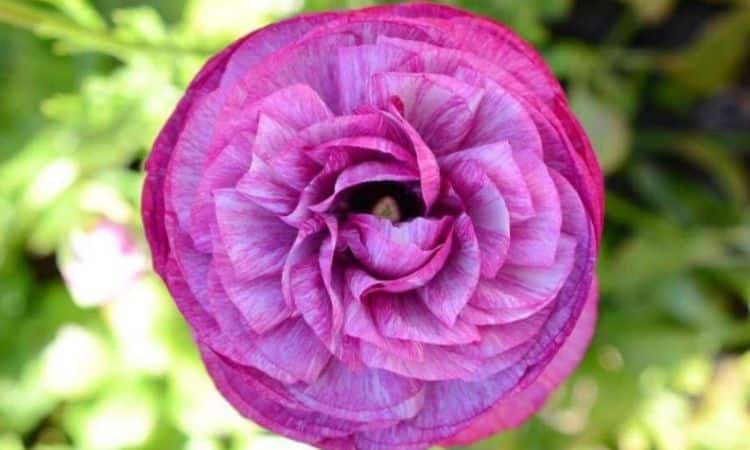
Plant Ranunculus: Time, Location
Ranunculus prefers semi-shady locations, but they also feel comfortable in sunny places. However, they react to too much direct midday sun with rapidly wilting flowers. The ideal time for planting ranunculus tubers is in spring (March to April), as soon as no more ground frosts are to be expected.
Plant Ranununkel In The Garden
The soil should be permeable, rich in humus, and nutrients. If the garden soil is impermeable, loamy, the substrate should be well loosened. In addition, some sand can be added to the planting hole to increase the drainage capacity. Before planting, the tubers should be placed in lukewarm water for several hours. Then you can plant the ranunculus 4 cm deep and with a planting distance of approx. 20 cm with the roots pointing down into the soil. Water the ranunculus well.
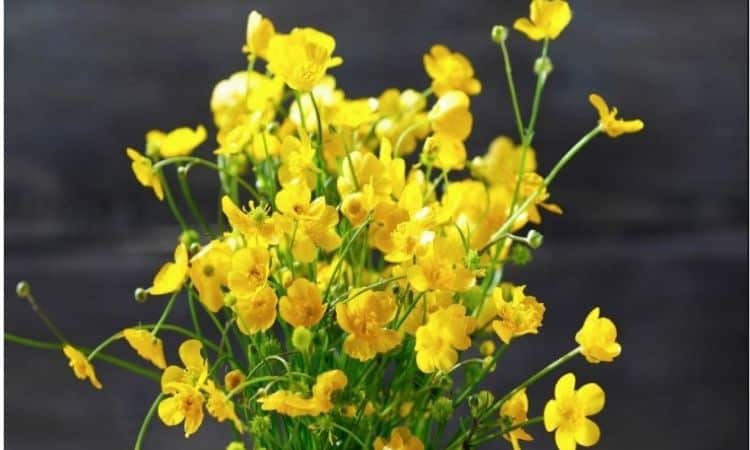
Planting Ranunculus On The Balcony
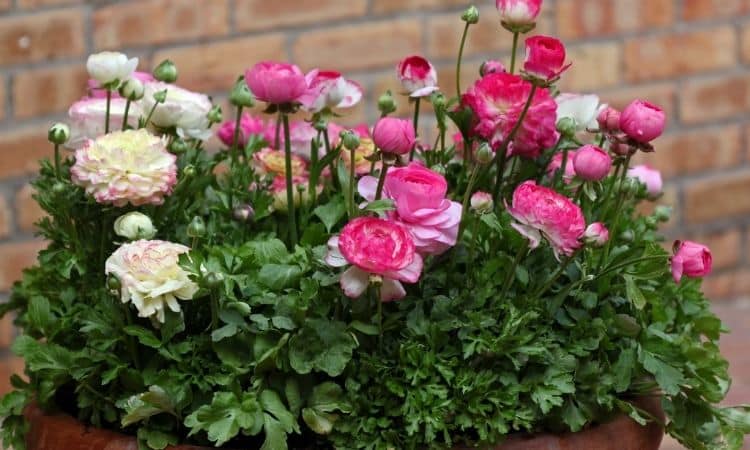
Ranunculus also thrives in a pot on the balcony or terrace. Peat-free potting soils are ideal as a substrate. Make sure you choose a planter with a drain so that no waterlogging can occur. To ensure that water is drained off additionally, you can mix some sand under the potting soil and place broken clay fragments on the bottom of the container.
Ranununkel Care
Apart from occasional fertilization, regular watering, and the removal of wilted flowers and leaves during the flowering period, ranunculus does not require any special care.
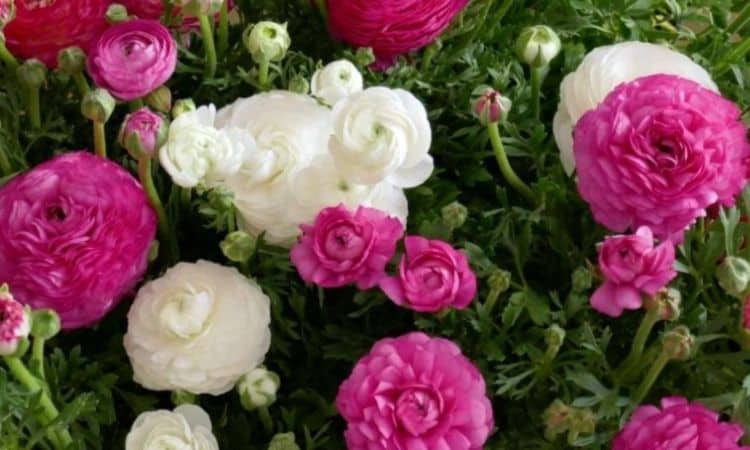
Pouring Ranunculus
Ranunculus has a high water requirement and should be watered regularly during the growing season so that the substrate does not dry out. However, do not water too much at once, otherwise under unfavorable conditions waterlogging will occur, which will damage the tubers.
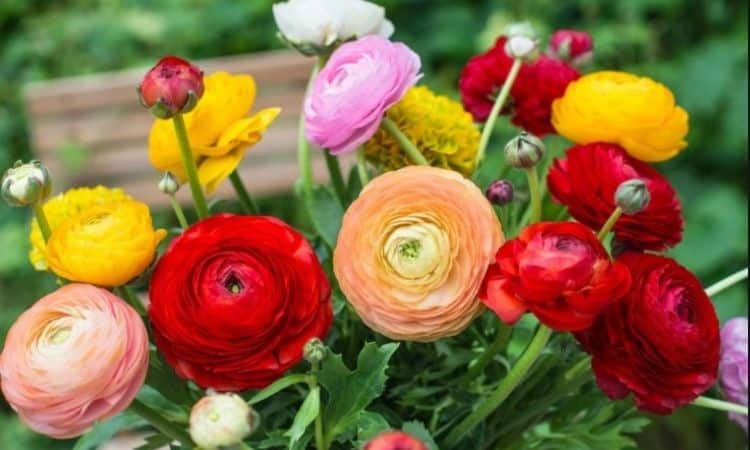
Fertilizing Ranunculus
For a luxuriant flower splendor, the buttercup should be regularly supplied with nutrients during the flowering period. For this purpose, a flower fertilizer in liquid forms is ideal for both the flower bed and balcony planting. Fertilize the ranunculus every 1 to 2 weeks via irrigation water. The dosage is 3 to 5 ml per liter of water.
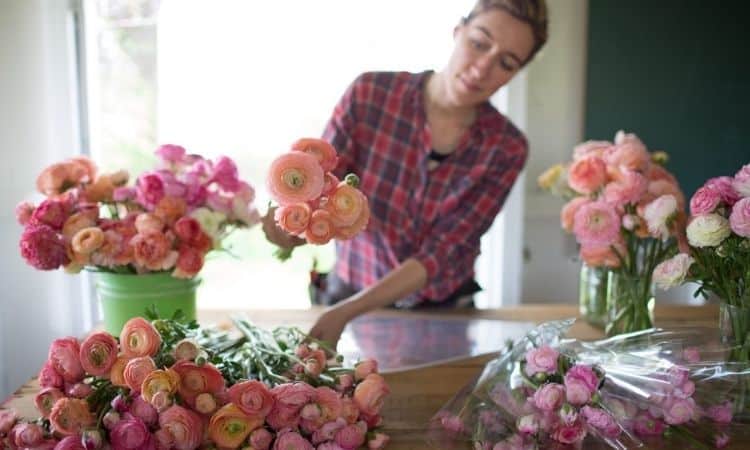
Care For Ranunculus In A Pot: You Should Pay Attention To This
If you cultivate ranunculus in a pot, you should pay more attention to need-based watering management. With potted plants, there is usually a higher risk of waterlogging or undersupply than on grown garden soil.
Ranunculus Overwinter
The ranunculus is perennial under the right climatic conditions. In regions where winter temperatures fall only a few degrees below zero, the tubers of the ranunculus, covered with a layer of leaves, can be left in the ground for the winter months. In particular young tubers and Ranunkel in plant containers should be dug out for security in the autumn and wintered at a frost-free place, to protect them from frost damage.

Propagate Ranunculus
Ranunculus can be propagated in two different ways. One possibility is the propagation via breeding tubers. Ranunculus multiply from year to year quasi independently by forming lateral brood-tubers. In late autumn, after the tubers have been dug up, they can be cut off from the mother tubers with a sharp knife or carefully separated by hand. It is important to separate the tubers in such a way that the cut or broken areas remain as small as possible. The ranunculus tubers obtained in this way can be replanted next spring.

The second possibility is propagation by sowing. Sow the ranunculus seeds in autumn or spring directly outdoors or in growing containers. To induce germination, the seeds must first be exposed to a cold stimulus (stratification). Therefore, store the seeds for about 1 to 2 weeks at 5 to 7 °C. Ranunculus belongs to the group of light sprouts and should therefore only be minimally covered with soil or only pressed on.
At 15 °C and regularly moistened with a spray bottle, the seeds germinate within approx. 10 days. When the young plants have developed 4 pairs of leaves, they can be planted singly and in larger containers or outdoors.
Is Ranunculus Poisonous?
Ranunculus is poisonous to humans and animals. All parts of the plant contain poisonous glycosides, which can cause severe symptoms of poisoning depending on the amount ingested.
If you are interested in more flowers that will turn your garden or balcony into a blooming paradise during the warm season, we recommend our article about the 10 most beautiful summer flowers for your garden.
More Similar Articles
